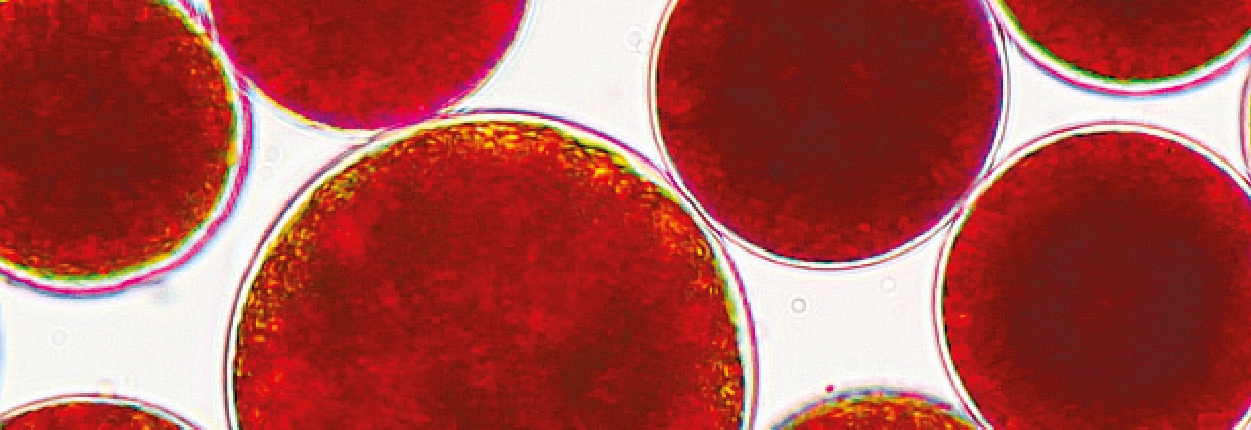Astaxanthin, powerful anti-inflammatory
Astaxanthin belongs to the carotenoid family. It originates from Haematococcus pluvialis, a microalgae which, in response to environmental stress, massively accumulates astaxanthin. One of the most important properties of astaxanthin is its antioxidant activity.
In addition, it was shown that astaxanthin had anti-inflammatory properties.
For example, researchers explored the effects of astaxanthin supplementation in modulating immune response, oxidative status, and inflammation in otherwise healthy young adult women. (n = 42, mean age: 21.5 years). It then appears that at the end of 8 weeks of supplementation at the level of 2 mg of astaxanthin per day, the subjects presented lower concentrations of C-reactive protein in the plasma compared to the control subjects, the C-reactive protein being a well-established marker of inflammation. These results illustrate the anti-inflammatory action of astaxanthin in humans.1
Many diseases have an inflammatory component, and astaxanthin supplementation has been shown to be effective in reducing markers and symptoms of inflammation, especially in animal models. Thus, Kumar et al. (2019) studied the effects of astaxanthin supplementation on the manifestations and markers of inflammation in arthritic rats. Arthritis is a term for more than 100 diseases characterized by inflammation of the joints and other parts of the body.2
It appears that oral administration of astaxanthin for 14 days notably resulted in a reduction in paw edema as well as a marked decrease in inflammatory and oxidative mediators in arthritic rats.3
Thus, numerous in vivo and in vitro data have demonstrated the anti-inflammatory effects and mechanisms of astaxanthin in mammals. Astaxanthin has been observed to alleviate chronic and acute inflammation in various diseases, including neurodegenerative disorders, diabetes, gastrointestinal diseases, kidney inflammation, as well as skin and eye diseases in different experimental models, indicating that astaxanthin may be an excellent candidate for the treatment of inflammation-related diseases.4
More studies in humans are needed to confirm these results.






